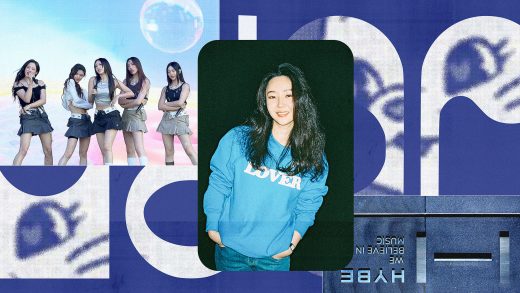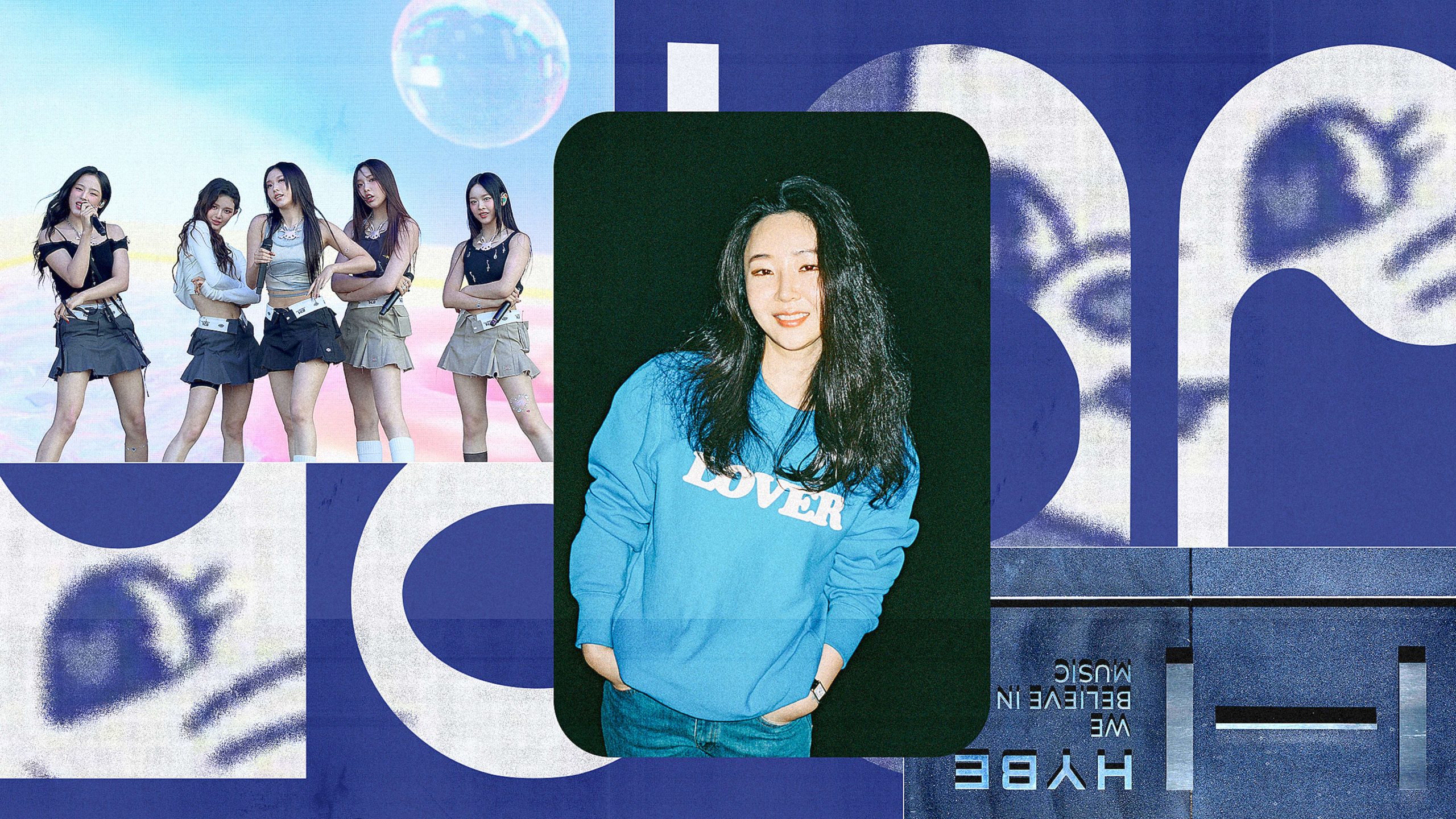K-pop’s leading company has declared war on itself. This never-seen interview profiles the creative legend at the center of it
K-pop’s leading company has declared war on itself. This never-seen interview profiles the creative legend at the center of it
Min Hee-jin created the K-pop sensation NewJeans inside Hybe. But now Hybe wants her out. In this extended Q&A, Min shared how she built the band and what she was planning next—before the conflict erupted.
BY Mark Wilson
In the K-pop capital of Seoul, a high-stakes battle is unfolding. Min Hee-jin, a household name in the world of Korean music, is a celebrated creative director behind some of the biggest groups from the past two decades. Her latest, and arguably greatest, creation is a girl group called NewJeans, which she launched in 2022 under the company Hybe—the same company behind BTS.
At Hybe, Min ran both the creative and business side of her own label called ADOR, or All Doors One Room, which generated $83 million in 2023 through NewJeans’ record sales and its brand ambassadorships with both mainstream brands like Apple and Coca-Cola, and the luxury labels Chanel, Gucci, Burberry, Dior, and Louis Vuitton. The group has stood out with its retro pop songs and nostalgic visuals, and landed on “best of 2023” lists from publications including Pitchfork and Rolling Stone. (ADOR’s unprecedented accomplishments earned HYBE its spot on our 2024 Most Innovative Companies list.)
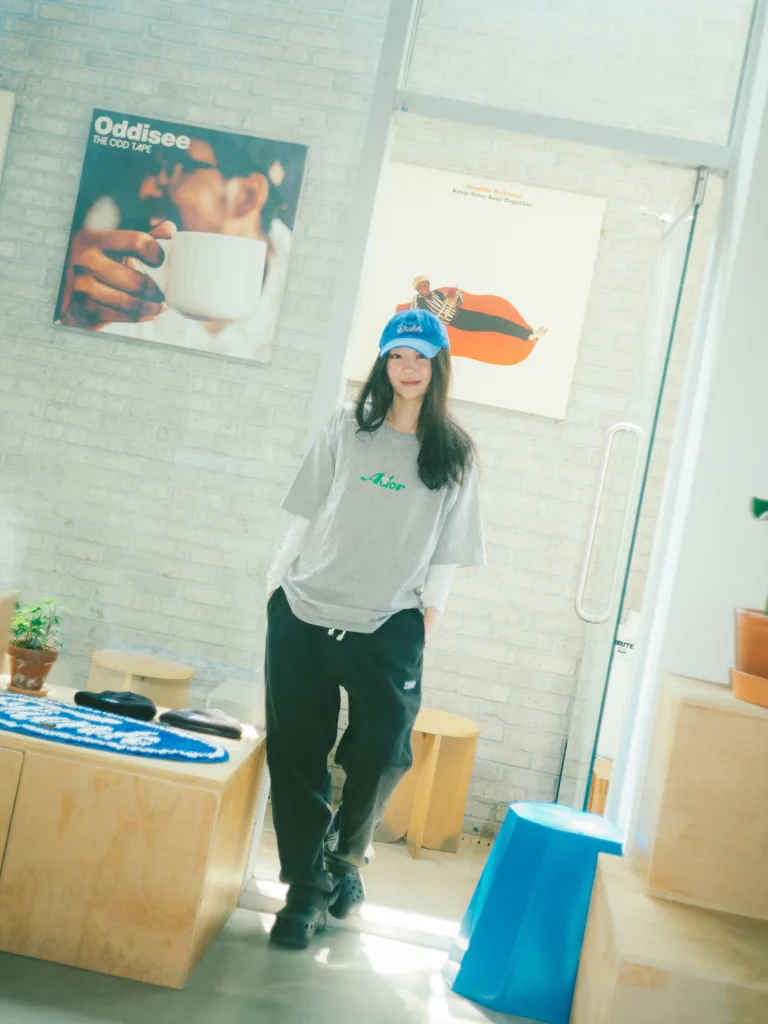
The relationship between Min and parent company Hybe, which is run by chairman Bang Si Hyuk (colloquially known as “Hitman” Bang and the impresario BTS), appeared to be mutually beneficial. But now the two are in open warfare.
Min is accusing Hybe of launching a competing girl group called ILLIT that seems to be channeling NewJeans’s sound and style. (Even the girls themselves resembled NewJeans—so much so that many commenters believed ILLIT was NewJeans during its first announcement.) “Hybe, a leading company in K-pop, is blinded by short-term profits and is mass-producing unoriginality by copying successful cultural content without hesitation,” Min’s label declared in a statement earlier this week. Hybe, meanwhile, has accused Min of attempting to spin off the label with external investors. It’s asked her to step down as CEO, and has said that it’s reporting her to the police for breach of trust. So far, she is refusing.
The battle is ongoing. Min recently held a tearful press conference in Seoul to solidify her position, where she claimed that Hybe prevented her from promoting NewJeans in the earliest days of the group. Hybe is promising to support NewJeans’ return in spite of this conflict. But it appears that Min—the most powerful woman in K-pop—could lose control of her cultural creation.
Last November, before all this came to a head, I visited the Hybe offices for an exclusive interview with Min. I was interested in speaking with Min about her untraditional entrance into the world of music: She established herself in K-pop as a graphic designer and then a creative director. The conversation, which lasted two and a half hours, was frank, wide-ranging, and sometimes emotional, as Min shared insights into how she designed one of the most popular musical acts in the world, why she believes her background in design makes her better at business, and where she dreamed that she can take K-pop next.
With the future of NewJeans uncertain, we present a lightly abridged version of the interview below.
Making the Band
So I have to admit, I’ve never been into K-pop. But . . . I love NewJeans! And I’m trying to figure out why.
With NewJeans, I was trying to target people who weren’t interested previously! I want them to become K-pop fans. The K-pop industry has traditionally been more centered on K-pop fanatics and “core fans,” but I wanted to have a group that everybody, regardless of their gender and age, could love.
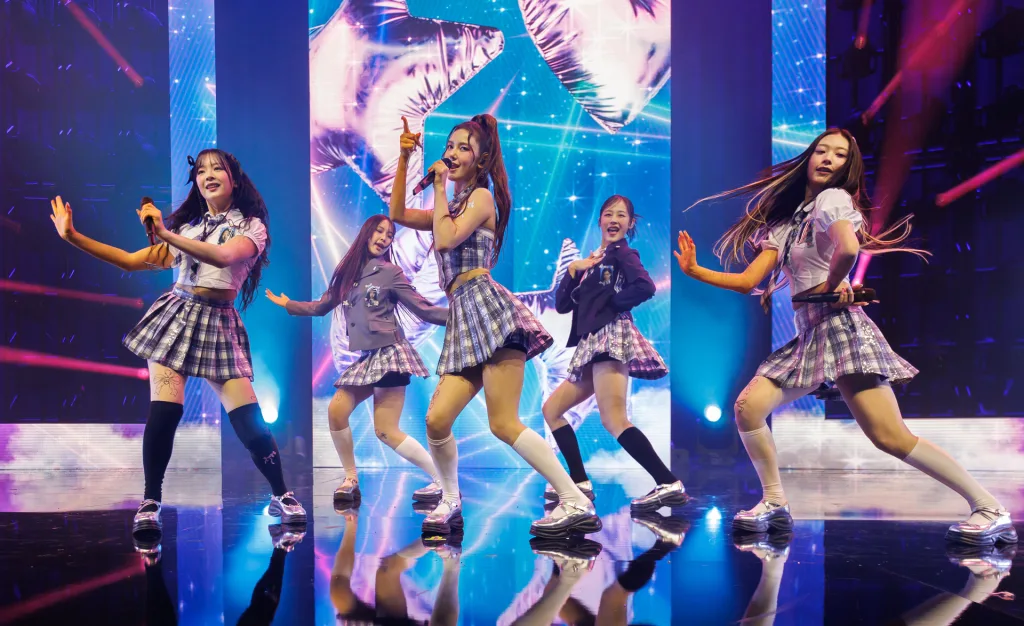
Well let’s start with the name of the group. What made you choose it?
I started off my career as a graphic designer, and then I became a creative designer and now a producer. I think this background is my weapon. Because I think an image can be expressed in graphics, but also in sound. There are words that sound sophisticated and there are words that sound kind of corny or boring.
I wanted the name to be a-national, which means it could be a Korean group or U.S. group or sound like a European group. I wanted it to be gender-neutral and have less of a feminine vibe. Because even though we were creating a girl group, I wanted the team image to be cool, chill, sophisticated. The name NewJeans also has these kind of retro, vintage vibes, almost like a male rock band name. [I also thought] it would be perfect for the Gen Zers because it sounded really straightforward and concise. I thought that if we use that kind of a name, it will be very effective at tearing down psychological barriers and touching people directly.
Plus, NewJeans is a combination of two very simple words. And the simple stuff is always the best.
As the creative director at SM Entertainment, you helped create Girls’ Generation, SHINee, EXO, and Red Velvet—some of the most popular K-pop groups in history. What’s the special perspective you bring to the industry?
I’m not a person who jumped into this industry because I loved it. I felt kind of differently about it and wanted to change it.
I wasn’t really interested in idol groups growing up because their style of music was very different from the ones that I personally preferred. If I had to pick my style, it would lean more toward indie music. I’m particularly interested in jazz.
I always had the thought that pop music was not really my thing, but I wanted to change that mindset so I joined SM. However when I started, I was just a plain employee, so I couldn’t do everything the way I wanted. I just did what I could within my role as an art director. But with each passing year, my career grew, and I became a chief creative director. But you know: artwork and music are inseparable. In order to actualize the full picture that I had in my head, I had to have my style of music. So I started to have that desire to create my type of music.
I wanted to have all of these come together: my definition of cool music, with my definition of a cool picture, with my definition of a great business. Business is, of course, important because if you don’t make money with art, it would be kind of useless.
And with ADOR, you stepped into a role as president, where you can control all these decisions?
I wear the hats of both a producer and president. In most cases, people separate the creative side and the business side. But I thought that the two things had to be together in order to be perfect.
I believe that a great creative has to be accompanied by a business [grounding] because you have to be commercially successful for good designs and good creative to spread. And because listening has such an impact on the way people feel, the music market is bigger than the art market—and more mass-market and commercial.
But my first priority [at ADOR] wasn’t making money. I just wanted to make a lot of cool stuff and have people unable to resist falling in love with it and purchasing it—and then make money.
A New Business Plan
What did you hope to accomplish when you started ADOR?
I wanted to spread beauty—well, what seems beautiful to me.
I don’t really agree with the people who seek outside consultants when they’re running their own business. I know best about my business. It’s not that I have an MBA, but based on my 20 years of experience in this field and all the lessons that I have learned along the way, I wanted to compile that and implement it with my own label. And because I am a creator, I thought that I would be able to do business well.
It turned out to be true because within just two months of NewJeans’ debut, we started making a profit, and we were able to pay the girls. This is very rare for K-pop. People are never able to guess how it happened because I’m not a composer and not a [traditional] business person. People usually straight up ask, “How on Earth did you earn so much money?” But for a person like me who made money through an unusual way, it’s obvious I have an unusual story. And it’s very hard for me to tell that in an easy way.
Most K-pop groups don’t come anywhere near NewJeans’ level of success. But that was by no means guaranteed. Why did you chart a different course for yourself at ADOR?
To me, my way was easier—because I didn’t understand the conventional way of doing business. Profit is all about output versus input. To me, it seemed like there was too much unnecessary input. And just cutting down on that input would solve all the problems.
NewJeans pretty quickly landed partnerships with blue-chip brands, including Apple and Coca-Cola. What was your philosophy behind those partnerships?
Those large companies don’t really pay a lot of money. I’m not saying that they paid us a little money, but there were other companies that were relatively less known that wanted to leverage us to improve their brand reputation. They were willing to offer more, but I didn’t sign with them.
If I were just to consider our short-term profit, I might want to choose the brand that is willing to offer the most money. But I don’t choose people who I work with based on the absolute amount of money that they offer; I just think about potential value. I think a lot of people make mistakes along that line. They’re very drawn to immediate money.
As for Apple and Coca-Cola, I never pitched them. My first business philosophy is to have people come to me.
You’re building demand from supply.
I knew that if I made good music and sophisticated concepts that people would want it, need it, and come to me. And I was positive that if I make something that I like and am satisfied with, other people will want to have it too. I felt that most people were thinking less of the essence [of what they were building], and were more obsessed with knowing how to make products sell fast and how to trick people into believing that this was attractive. My philosophy was not to trick myself.
I put a lot of effort and thought into creating good quality, good essence. I thought that if I could just focus more on creating the best essence, it would make my life easier with the second part, [the business]. To me it felt like other people were doing it the other way around. And this felt like an opportunity to me.
It’s interesting how, with NewJeans, brand partnerships are not just a money-making enterprise. They are an expression that’s fundamental to the group’s identity. For example, NewJeans plopped bunny ears on the Apple logo—marking the first time such a thing had ever been done with the protected trademark.
Apple was completely fine with [having its logo amended] because we had it so well-designed. A lot of people ask me how we got Apple to let us use their logo. I just told them my idea, and they believed it.
Before we launched NewJeans, my moving from SM to Hybe made the news because I was going to a competitor. I used that hype to my advantage. I accomplished a lot of things when I was at SM, and I left because I was not really satisfied with my life there. But I’m not saying that I came here because I love this company; I needed a place where I could actualize my vision.
What made me feel kind of good was, some luxury brands, even before we had the news out about NewJeans—just when they were aware of the fact that I was going to create a girl group—they came up to me for a deal. To me it was kind of proof that I did my job well until now, because these luxury brands had faith in me. I’m very grateful for that.
K-pop fans seem to take brand ambassadorships so personally.
There’s a war between boy bands and girl groups in Korea over whose ambassadorship is more high-end. It’s very weird. And how childish is this, fighting over whose brand is better?
A Sound Economy
I wonder how you think about interactivity. We’ve talked a lot about music, but entertainment today is beyond multimodal. There’s social media, apps . . . it feels like we’re at a time of convergence where everything’s mixing and blending.
To me, everything that’s going on with social media is like different ways of enjoying music. I’m most interested in the essence, and less in all the other methods and different stuff surrounding that. So if you start to make music with TikTok and Reels in mind, the music will turn out to be too lighthearted and there will be too many restrictions. I think if you could just put out good stuff, people will find what they are looking for.
[The NewJeans hit] Super Shy is a song with repetitive verses and [doesn’t have] a really strong hook. It’s almost like Justin Bieber’s Peaches. Since it’s a repetitive song, people were asking whether we were targeting for that song to become a hit on Shorts, but that’s not the case. I just let the song be the way it had to be.
For most K-pop songs, there’s always an intro and then the climax and the tension relieves again, because people think that having loops is boring. There have to be different types of music! Yet everybody wants to make a song that follows the traditional rules of a hit song.
How do you source the songs themselves?
We buy songs from different composers. We just give them a brief guidance about a concept. We don’t push them to make a hit song or give them really detailed directions to follow. We just leave them to make the music that they can really make best.
You have to let the composers do what they want to do. And I don’t really believe in stitching together different parts from different songs, I just want to use the song in its entirety. There is a reason why we have composers make the songs! Sometimes, we’ll adjust the top line, but we never go as far as to damage the real intention of the song; because in that case, there is no reason to use that song in the first place.
I try to collect as many good songs as possible, and then I curate the songs after. That way, we can have another layer of refinement, have it organized once more. These days people use the word producer kind of interchangeably as a composer. I’m a producer, but I don’t make songs. I plan strategies.
Today, you see a lot of musicians who have spun out to become creative directors, who have fashion lines and other endeavors, but you don’t see the reverse happen as much.
Actually, to me, creative direction comes second [and the music comes first]. I need creative directing to highlight the music that I want to share with other people.
Do you still listen to jazz?
My favorite type of music is the jazzy-lounge type. I listen to all types of genres, but my favorite musician is Astrud Gilberto.
(Min takes out her iPhone, and plays The Girl from Ipanema.)
I cried after listening to this song for the first time when I was 8 years old. The reason why this song has a special meaning to me was because it was the first jazz song to be number one on the Billboard charts. And jazz music isn’t typically on the top of the Billboard charts, right? This became a real inspiration to me. It gave me hope that my type of music, or the type of music that I was trying to do, could be number one as well.
When I’m really stressed out and exhausted, I’ll just play these favorite songs from my childhood, and I feel my mind forgetting about all of those complicated things that I have hanging over my head. I go back to why I started this thing in the first place, and what made my heart race when I was young. It’s very difficult to put in words, but I can feel that energy that comes when people put their everything into a song. And I feel that with this song. So what they did is inspiring to me, living in a completely different country, in a completely different generation. I think this is the power of creation.
I want to make NewJeans’s music so that it will still sound really beautiful after 10, 20 years. You never throw away your favorite pair of jeans—your favorite pair of clothing you can wear every single day. I think the kind of clothes that you can wear every single day are like pop music.
You’ve said that you want to create music that you love, but it feels like the music you deeply love is not necessarily commercial music.
The songs that I love, they might not be famous, but they always have that something that gives them the potential. I think I have the ear to identify that in songs.
I recommend a lot of songs on my Instagram. And about 90% of the songs I recommend are not that famous. But if you listen to it, you will know that every single one of those songs has that special something that could make them a hit song. I really love finding those hidden gems and sharing them with the world. Because there’s so many great things out there in the world, but only a very small part of it is introduced to the pop scene.
Looking Ahead
You’re so focused on NewJeans, but I assume with ADOR that you plan to work with multiple bands as your ultimate goal. You also executive produced the debut album from BTS’s V, Layover, which came out this past September.
I didn’t really have the goal to make multiple groups [at ADOR]. My only goal was to create good stuff. I’m not the type of person who plans things out vigorously. I just have a big general plan. And within the rough plan that I have in my head is that if any interesting things come up along the way, I want to capture those opportunities.
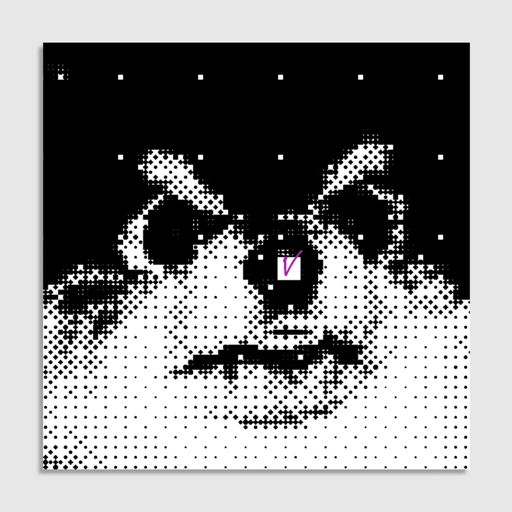
I never expected to work on V’s solo album. He asked me for my help, and he’s so popular, so I thought that it was a good opportunity for me to try new things with less pressure. The title song [on Layover, called Slow Dancing, has an instrumental outro that] is almost one-minute long. That is not commercial at all. It’s an artistic experiment. And it was a try I could go for because he is really popular.
Some BTS fans want to compare how well one member’s album does over another member’s. BTS is a group that’s been around for 10 years now. They did their duty, basically. So I think it’s time to focus less on the stats and just enjoy their music—[let them] do what they want to do.
My mindset when I was producing for V was to help him do music that he could really enjoy. In commercial terms, there wasn’t a reason for me to work on that album. It was just a one-off thing. It was not that we were going to work together continuously going forward. And I was busy enough with NewJeans. So me diverting some of my time to that project could have been a little risky. But his intentions were really pure. I wanted to make him nice memories or maybe give him a gift. Unlike NewJeans, he doesn’t have to obsess over numbers and things. And personally, I just hope that NewJeans won’t either.
What do you want NewJeans to think about?
When we do our work, we just want to bear in mind the fact that we’re cool, whatever we do is great, and whatever result comes out, we just want to embrace it. In order to maintain this kind of chill attitude, I have to juggle different things like I mentioned earlier. It’s really difficult to make money while looking cool. But I guess I’m aiming for an impossible goal.
With NewJeans, I want to [help] them make fun, happy memories—something that they can really look back on and enjoy even when they grow old. They chose to work with me [instead of] going to school. Our contract is for seven years. And seven years is almost like three years of high school and four years of college. So what I said to them in the beginning was, “Think of this as studying with me for seven years.” They’re so young, and I wanted them to think of this experience as studying, and not to focus too much on the numbers.
I think when you’re working with such young girls and [you’re] somebody who owns this business, you have to have an ethical sense of mind. What I wanted to do was, just like school, I wanted to teach them ways that would help them live a really happy life later on.
I think I had these thoughts because we’re in the K-pop idol scene and because I have to work with really young girls. In the past, people used to say the K-pop way of creating idols was like a factory. The training system is different from the way things are done in the United States, but there are misconceptions around it.
How so?
I think we get racially discriminated against, in a way, because our cultures are different. But K-pop is evolving and advancing. And I think having these values in my mind will help me going forward, and it will also help in transforming this business for the better—me putting a lot of thought into how to work together with young girls in this business.
Suppliers, so to speak, of K-pop have to improve themselves [and address problems in the industry]. But the consumers have to improve themselves as well. Even when I’m really making an effort to do things the better way, the consumers might not be able to notice it. But they have to have that patience. Actually, I have to have that patience to wait until that person at the other end starts to notice that I’m making an effort to do things better. People are traumatized by what happened in the past [in the K-pop industry], so I still have to be honest and show to them consistently over a long period of time that I really mean it.
What do you imagine for the future of NewJeans?
If we end up doing even better, that means we can take even more [risk]. Ultimately, I want to create a world where there are no stats on the performances of albums. I don’t like arts being influenced by how well everything does. So I want our group to do really well, to blow up, to become the top, and then say out loud to the world that these stats, these indicators, are not really important.
People will only listen to you when you’re number one. People trust you, believe you have a point, when you’re number one. So if we could really stand on top and then give up on all the commercial stats, then that will really send out a message to the community and change a lot of things.
I guess my ultimate goal sounds really idealistic: a world without stats or competition. I’m not really sure whether this would work in modern society, but I guess it would not be too bad for one person to at least have this goal in mind in a world like this. I don’t like competing or arguing that somebody’s better than somebody else because within art there can be no such thing. It’s different; it’s equal.
This conversation has been condensed and edited.
ABOUT THE AUTHOR
(9)

